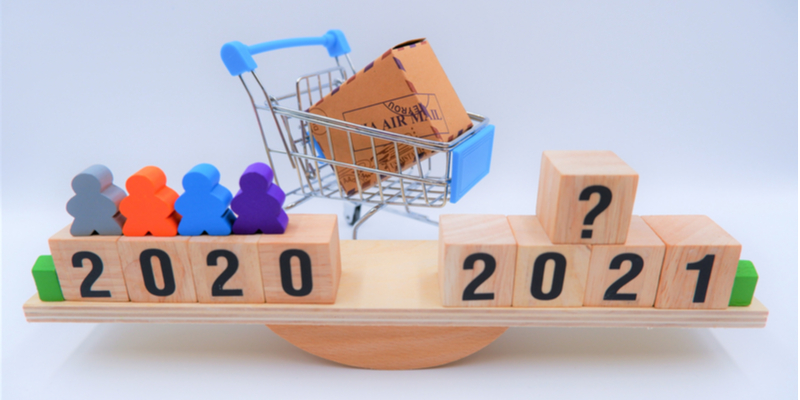
Yes, we know what you’re thinking; that reference to “first” is not an encouraging one. Nonetheless, no matter how long the coronavirus crisis lasts, the fact remains that we’ve learned a lot about the state of retail – online and offline, in the UK and beyond – over the last nine months.
Those lessons, in turn, can have implications for how you choose to tweak your brand’s e-tail presence during the year to come.
Some figures in relation to customer habits over the last few months are, of course, still filtering through. But on the basis of what we do already know, let’s look at some of the insights and conclusions we can draw from the ‘COVID Christmas’ just finished.
Ecommerce is (predictably) thriving
While it has to be the least revelatory development of the UK’s coronavirus-affected festive season, it’s worth reminding ourselves just how drastically the pandemic has helped to accelerate an existing drift towards online shopping.
According to the Office for National Statistics (ONS), Internet sales as a percentage of total retail sales had already long been on the up. The first nationwide lockdown, however, vaulted this percentage from 19.1% in February to 32.9% in May. For November – the month coinciding with the autumn lockdown in England – a new peak of 36% was achieved.
December saw the return of the tiered system of restrictions and the widespread reopening of non-essential retail on our high streets; it’s no wonder, then, that the Confederation of British Industry (CBI)’s monthly retail sales balance increased to -3 for that month.
The outlook for January, however, was a much bleaker -33. With much of England having been placed under tougher tier 4 rules for the New Year – bringing about the closure once more of non-essential retail – the ecommerce surge looks likely to continue well into 2021. That could mean even more opportunities for brands that have been optimising their online sales arms since March.
Not all e-tailers and product categories will have automatically done well
Unfortunately, some small businesses that attempted to maximise their online sales during the Christmas season are likely to have learned this particular lesson the hard way.
The fact is that even with the above apparent bonanza in ecommerce opportunities, COVID-19 didn’t just force us online – it also altered our buying habits, including in relation to Christmas gifts.
EBay data cited by CNBC, for example, indicated that gym equipment, board games and jigsaw puzzles saw strong sales in the UK in the run-up to the November lockdown. It therefore seems logical to expect such ‘indoorsy’ items to have been well-represented among popular gifts for Christmas 2020.
So, which product categories may have struggled during the festive period just gone, even for online sellers? Jonathan Pritchard, retail analyst at Peel Hunt, has suggested that “clothing faces the biggest problems because people are not going to Christmas parties”.
Keeping hold of customers is no less important than acquiring them
This particular insight isn’t likely to be a new one to a lot of the more experienced ecommerce brands. For those, however, who may have largely depended on a brick-and-mortar retail presence, only to be forced to largely switch their focus to online selling from March onwards, it’s a key mantra to take into 2021.

